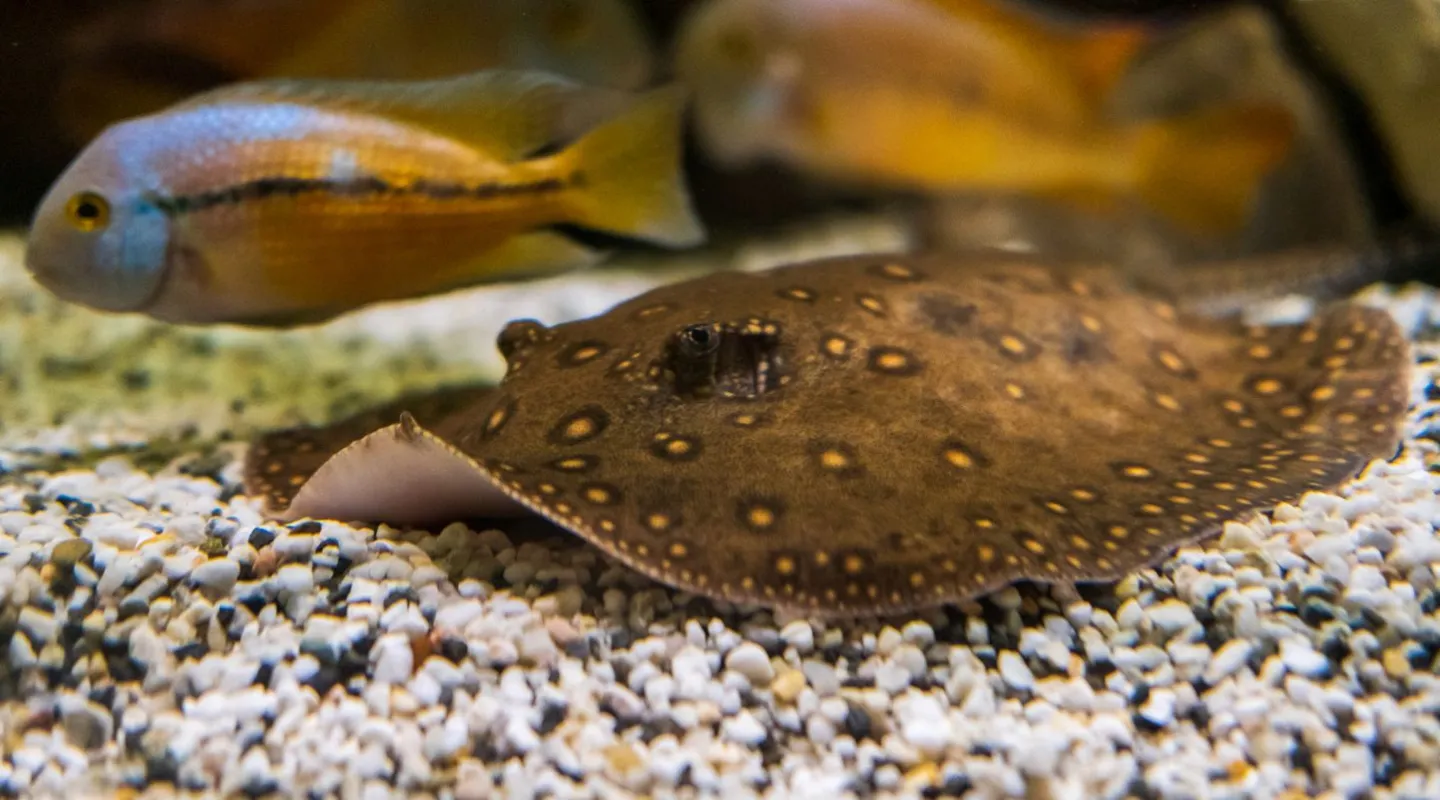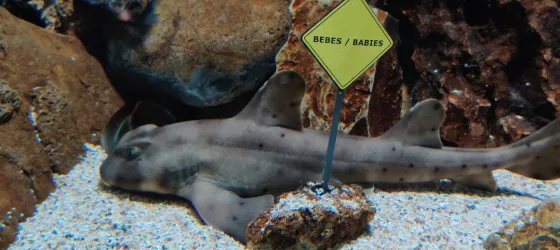In this way, they can observe the animal closely and ensure that it is in good health.
The ocellate river stingray is ovoviviparous. It reaches sexual maturity when it is three years old and has a diameter of approximately 30-35 cm.

Rays

Identity card
Appendix III
Fresh and tropical waters of South America
It lives in calm waters, on sandy floors.
It measures up to 50 cm.
Small molluscs, crustaceans and aquatic insect larvae.
The stingray (Potamotrygon motoro) is part of a MON-P or Monitoring programme.

The keepers teach the stingrays to come and get their food when they hear an audible signal
In this way, they can observe the animal closely and ensure that it is in good health.
The ocellate river stingray is ovoviviparous. It reaches sexual maturity when it is three years old and has a diameter of approximately 30-35 cm.
In South America, it is feared more than piranhas, even if it only stings to defend itself. Its spines contain a powerful venom.
Juveniles feed on small molluscs, crustaceans and aquatic insect larvae. Adults follow the same diet with a preference for various aquatic insects.
The main threats to the species probably come from habitat degradation: the damming of the Río Paraná River for navigation and hydroelectric plants, the construction of numerous harbours along the river.
The ocellate river stingray (Potamotrygon motoro) is part of a MON-P or Monitoring programme that is even less restrictive than the ESB. Its objective is to simply monitor their population in institutions that are partners of EAZA, the European Association of Zoos and Aquariums.
In the eye of the climate

The Ocean Mag
In the spotlight
Poissons, crevettes, requins, les animaux qui se reproduisent ou sont élevés à Nausicaá rejoignent les espaces d'exposition.

Article
Which came first, the egg or the fish? A brief overview of eggs and reproductive strategies in marine animals.
Article
Coral, the planet's largest builder, is a fragile and threatened animal.